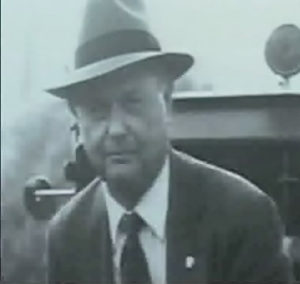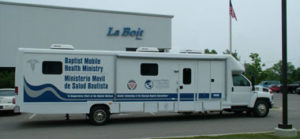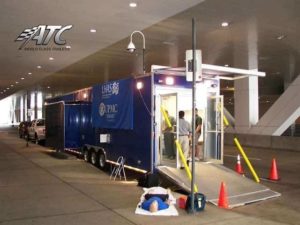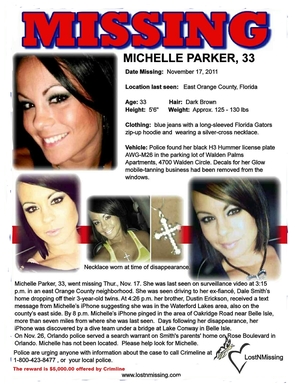“How can you prosecute a murder without the body?” I cannot count the number of times I have been asked this question over the past ten years. My answer has always been the same: “Yes, it can be done and has been done, more times than you think.” If murder is the ultimate crime, then a “nobody” murder is the ultimate murder. In our nation’s history there have been just under 400 no-body murder trials, that is, trials where the victim’s body has never been found. Now, for the first time ever, this book will provide a practical guide for police and prosecutors facing the challenges in these cases. This book takes an expansive look at both the history of no-body murder cases and the best methods to solve and try them. I will take the reader step by step from the first days of a homicide investigation through the trial
INTRODUCTION
1-1. This TC describes traditional tracking through rural terrain and, to a lesser extent, discusses urban tracking. Understanding the ancient art and science of tracking lays a firm foundation for a variety of activities useful in SF operations. A Soldier trained in tracking techniques can use deception maneuvers that minimize telltale signs and throw off or confuse poorly trained trackers who do not have the experience to spot the signs of a deception.
1-2. An understanding of the thought processes and the TTP used in traditional tracking are useful as an adjunct to and a basis for understanding an array of modern, technologically-based tracking activities. Traditionally, tracking has been defined as the art of being able to follow people or animals by the signs they leave when they move. Today, it is possible to track the enemies of the United States through electronic means, such as the equipment used with... When a couple marry and repeat their vows, often including the preceding lines, who would imagine that for some of them the 'death' that will sever the marital tie would be the result of the other's action? That one day, perhaps in a moment of rage, the once beloved partner will pick up a gun or knife and kill. Just in a nine-month period, a spate of these tragic acts, which included the suicide of the offender (and thus received a good deal of publicity), took place throughout Australia: October 1990, Sydney, man kills his wife, mother-in-law and himself; December 1990, Canberra, estranged husband killed wife, two children and himself; January 1991, Adelaide, woman and three children killed, husband missing; January 1991, Brisbane, estranged husband kills former de facto, father-in-law, his 11-month old baby and himself; May 1991, Adelaide, man kills his defacto and himself; June 1991, Tasmania, man kills his girlfriend and himself.... The impact of a confession on a jury in a capital case is so powerful that a defense attorney who does not attempt to suppress it risks charges of providing inadequate counsel. While there are legal safeguards afforded a defendant at trial to refute the voluntariness or trustworthiness of a professed confession, a false confession should be recognized long before it is entered into evidence against an innocent defendant. Ultimately there responsibility of determining whether a confession is true or false falls upon the investigator who obtained it.A widely known critic of police interrogation addressed an audience and stated that in his years of reviewing confessions he has seen both non-coerced reliable confessions and confessions from innocent people who were convinced by the police that they were guilty. He went on to state that if he distributed ten of those confessions to everyone in the audience and had them place the confessions into two piles, five of which were true confessions and five of which were false... Abstract
Recent DNA exonerations have helped shed light on the problem of false confessions and the empirical fact that innocent people sometimes confess to crimes they did not commit. Drawing on past and current police practices, laws concerning the admissibility of confession evidence in court, relevant core principles of psychology, and forensic studies involving an array of empirical methodologies, this White Paper summarizes much of what we know about police-induced confessions. AS part of this review, we identify dispositional suspect characteristics (e.g., adolescence; intellectual disability; mental illness, and certain personality traits), interrogation tactics (e.g., excessive interrogation time; presentations of false evidence; minimization), and the phenomenology of innocence (e.g., the tendency to waive Miranda rights) that can influence the reliability of confessions, as well as their effects on judges, juries, and other decision makers. This article concludes with a strong recommendation for the mandatory videotaping of interrogations and considers other possibilities... Science can provide more information about the nature of aggressive acts, and therefore the mens rea of criminal offenses, than is commonly assumed. For example, progress has been made in classifying aggression as impulsive or premeditated within the context of the role of conscious experience in controlling behavior. This review of the status of the scientific ability to distinguish conscious from unconscious acts and more specifically impulsive from premeditated aggressive acts is organized around four themes: (i) How is aggression defined and measured in general? (ii) How does the distinction between impulsive and premeditated aggression relate to the legal concept of mens rea? (iii) How do various scientific disciplines con-tribute to the mind/body discourse? (iv) What risk factors are associated with impulsive and premeditated aggression respectively? The authors conclude that the most promising approach to researching the nature of behavioral intention and motivation is to apply a discipline neutral model that integrates the data from multiple disciplines, collectively designated the cognitive neurosciences. Copyright#2003 John... Like many issues in the psychology–law area, when it comes to eyewitness evidence, researchers see an obvious opportunity to help solve a problem—in this case, to maximize the rate of accurate information and identification decisions while at the same time minimizing the rate of mistakes. Psychology is especially well suited to this task, given its interest in the psychological aspects of eyewitness evidence, such as attention (e.g., studying an assailant’s face while being assaulted vs. learning only later that a bank customer committed fraud by passing a bad check), perception (e.g., of color, distance, height, speed), memory (e.g., length of retention interval, interference, source monitoring), decision making (e.g., determining the odds of a witness choosing a suspect by chance), interpersonal communication (e.g., witness interviews), and attribution theory (e.g., a witness wonders why she has been asked a particular question or shown a particular lineup). So, to address the legal system’s “problem,”... In the United States, financial compensation for academic anesthesiologists has usually been based on rank and/or clinical time. Typically, faculty salaries would increase with seniority and the associated increases in rank (i.e., assistant professor associate professor full professor). Since most of the actual financial compensation is derived from clinical activity, a certain clinical expectation (i.e., usually number of days per week in the operating room plus call) would be expected. If a faculty member has research
grants, money from the grant may be used to help pay a faculty member’s salary and increase his or her nonclinical time. These are the principles by which academic departments have for years compensated their faculty, although there have undoubtedly been many variations. Over the past 10 to 15 years, many American academic anesthesia departments have increasingly had problems with recruiting and retaining faculty (especially junior faculty), making it difficult to provide clinical coverage for all of the...
Although acknowledging the importance of adolescent friendships in the etiology of delinquency, prior studies have yet to provide a detailed examination of the role of actual friendship networks in delinquency. Using data from the National Longitudinal Study of Adolescent Health (1995–1996), this study’s incorporation of friendship networks allows for a more rigorous conceptualization and measurement of peer delinquency based on carefully defined networks of adolescent friendships. Findings illustrate that friendship networks are very heterogenous in terms of members’ participation in delinquent behavior with the majority of adolescents belonging to networks containing both delinquent and non-delinquent friends. In support of differential association’s premise that delinquent behavior is influenced by the ratio of definitions favorable to those unfavorable to law violation (Sutherland, 1947), the proportion of delinquent friends in a respondent’s network is most strongly associated with respondents’ subsequent delinquency. This relative measure of peer delinquency is preferable to a measure of the absolute level of delinquency occurring by friends, the average delinquency committed by friends,... Abstract
Researchers typically examine peer effects by defining the peer group broadly (all classmates, schoolmates, neighbors) because of the lack of friendship information in many data sources as well as to enable the use of plausibly exogenous variation in peer group composition across cohorts in the same school. This paper estimates the effects of friend’s health behaviors on own health behaviors for adolescents. A causal effect of friend’s health behaviors is identified by comparing similar individuals who have the same friendship opportunities because they attend the same school and make the same friendship choices, under the assumption that the friendship choice reveals information about an individual’s unobservables. We combine this identification strategy with a cross-cohort, within school design so that the model is identified based on across grade differences in the clustering of health behaviors within specific friendship options. This strategy allows us to separate the effect of friends behavior...
A remarkable feature of many complex systems is the occurrence of large and stable network structures as, for example, networks on the protein or gene level, ecological webs, communication networks, and social networks[1 – 3]. Simple models based on disordered networks are quite successful in describing basic properties of such systems. When addressing topological properties, however,neither random networks nor regular lattices provide an adequate framework. A helpful concept along this line is the idea of “small-world networks” introduced by Watts and Strogatz [4,5] which initiated an avalanche of scientific activity in this field [6 – 11]. Small-world networks interpolate between the two limiting cases of regular lattices with high local clustering and of random graphs with short distances between nodes. High clustering implies that, if node A is linked to node B, and B is linked to node C, there is an increased probability that A will also be linked to C. Another useful measure is the distance between two nodes, defined as the number of edges along the shortest path connecting them. A network is called a “small-world network” if it exhibits the following two characteristic properties [4,12]: (i) high cluster in... Abstract
Criminal organizations inhabit dynamic environments where the pressures of competition and state opposition constantly challenge their existence. To survive and prosper, they must be resilient. Little has been written about the concept of resilience in the context of illicit organizations. This article explores possible sources of resilience for criminal organizations, focusing on institutionalised gangs. Drawing on ecological and organizational literature, resilience is defined as the capacity to absorb and withstand disruption and to adapt to change when necessary. For gangs and other criminal organizations, sources of resilience may include environmental factors and individual organizational features such as network characteristics. Resilience is not just a concept that enables criminologists to better understand the longevity of some criminal organizations; it also has implications for the strategic and operational aspects of policing such organizations, including intelligence gathering, the design of interventions and assessment of their potential unintended consequences. 2009 Elsevier Ltd. All rights reserved Abstract
Clique relaxation models that were originally introduced in the literature on social network analysis are not only gaining increasing popularity in a wide spectrum of complex network applications, but also keep garnering attention of mathematicians, computer scientists, and operations researchers as a promising avenue for fruitful theoretical investigations. This chapter describes the origins of clique relaxation concepts and provides a brief overview of mathematical programming formulations for the corresponding optimization problems, algorithms proposed to solve these problems, and selected real-life applications of the models of interest.
1 Introduction
Social networks represent certain types of social interaction, such as acquaintance, friendship, or collaboration between people or groups of people that are referred to as actors. In social networks, vertices (nodes, dots) usually stand for actors, and edges (arcs, links, lines) represent the pairwise relations or interactions between the actors. As an illustration of a...
The 1990s witnessed the progressive ‘miniaturization’ of personal computers and other digital devices. This affected virtually every type of business, research program, as well as the daily lives of millions of people around the world with access to electricity. The development of portable high-speed personal computers and other data collecting devices was not lost on archaeologists who have always had a deep interest in utilizing technological and scientific methods to advance their recording and study of the past (Renfrew and Bahn 2004). In 1997, when the University of California, San Diego initiated the deep-time study of ancient metallurgy and social evolution in Jabal Hamrat Fidan (JHF) region of the Faynan district in southern Jordan, a fairly traditional style of ‘analogue’ or paper archaeological recording was carried out during the first season of excavation. With the exception of using a very expensive Sony video camera for taking digital still photographs of... Latitude lines run east-west and are parallel to each other. If you go further north north, latitude values increase. Finally, latitude values (Y-values) range between -90 and +90 degrees
But longitude lines run north-south. They converge at the poles. And its X-coordinates are between -180 and +180 degrees.
Latitude and longitude coordinates make up our geographic coordinate system.
Map Coordinate Systems
You can give anything on Earth latitude and longitude coordinates.
The field of study that measures the shape and size of the Earth is geodesy. Geodesists use coordinate reference systems such as WGS84, NAD27 and NAD83. In each coordinate system, geodists use mathematics to give each position on Earth a unique coordinate.
A geographic coordinate system defines two-dimensional coordinates based on the Earth’s surface. It has an angular unit of measure, prime meridian and datum (which contains the spheroid).
As shown in the image below, lines of longitude have X-coordinates between -180 and +180 degrees. I. Introduction
I.1 Forensic Searches for Human Remains
The nature of police work is such that sometimes only vague clues are available regarding the location of a clandestine grave (e.g., “in farmer Brown’s bottom field.”). However,oftentimes without information of this type even the best available forensic tools have little hope of finding a grave. A variety of forensic tools can be used to locate clandestine graves. These are more efficient once the general location of a suspected grave site is identified. The forensic methods range from non-invasive techniques to extremely invasive techniques, and include aerial photographic surveys of suspected areas, ground level photographic surveys, magnetometer and metal detectors, dogs trained to search for cadavers, ground penetrating radar, infrared photography, vegetation differential (pioneer plants), and penetro meter. Treatments such as wetting the site and then using ground penetrating radar and/or magnetometer, plowing the siteand looking for color differential or other evidence of disturbances, and finally perform the actual forensic exhumation are also performed [1]. Context
.
—Gunshot wounds are the most common cause of homicidal death in the United States. Analysis and interpretation of fatal gunshot wounds is an important and common practice among forensic pathologists. Additionally, for pathology residents, it is an integral aspect of their training during their rotations at medical examiner or coroner offices.
Objective.
—The correct interpretation of gunshot wounds by forensic pathologists not only provides valuable information that can assist law enforcement in their investigation but also is essential for the final determination of manner of death. Discussion of the practical, basic, and essential skills required to interpret gunshot wounds include distinguishing a classic entrance wound from an exit wound; recognizing atypical entrance and exit wounds;utilizing the features of soot and stippling patterns to differentiate among contact, close, and distant range gunshot wounds; understanding of the trauma produced by gunshot wounds; and understanding the importance of recovering and documenting... Incisions made in the direction of Langer’s lines are less likely to gape. This is because they run parallel to the predominant direction of collagen bundles in the dermis - Langer developed his lines by stabbing cadavers with a conical punch. The resulting defects were often oval, rather than circular, because of the direction of the underlying collagen bundles. Langer joined the long axis of these ovals to establish his lines. The direction of Langer’s line on the torso can be established by placing the patient in the foetal position. Then outline the perimeter of a 20 cent piece over the area of interest. When the patient stand upright the outline of the coin will be oval with the long axis indicating Langer’s line. It is useful to know the surface marking of the entrance of the superior vena cava into the right atrium when positioning a central venous catheter. It is... Abstract
During March-June and August-September 1981, 245 medicolegal autopsies were conducted by the author at the Johannesburg and Diepkloof government mortuaries. In 52 cases (21.2%) penetrating incised wounds of the thorax were found to be the cause of death. These involved diverse and often multiple thoracic structures - ventricles, atria, interventricular septum, lungs, and, in particular, blood vessels. In most of these cases death was ascribed to either exsanguination and the attendant hypovolaemic shock or, in those wounds involving the pericardium and myocardium, cardiac tamponade. Several findings emerged from this study: (i) an abysmally low number of the victims (5.8%) reached a medical facility alive; (ii) no females were seen, and the 21-30 year age group predominated (46.2%); (iii) 80.8% had arrived at the casualty department Introduction
The first thing one must realize is that the word “system” is a misnomer, when used in the context of death investigation in the United States. There is no “system” of death investigation that covers the more than 3,000 jurisdictions in this country. No nationally accepted guidelines or standards of practice exist for individuals responsible for performing death-scene investigations. No professional degree, license, certification, or minimum educational requirements exist, nor is there a commonly accepted training curriculum. Not even a common job title exists for the thousands of people who routinely perform death investigations in this country.
This report describes a study that focused on the establishment of
guidelines for conducting death investigations Purpose and Scope of the Study
The principal purpose of the study, initiated in June 1996, was to identify, delineate, and assemble a set of investigative tasks that should and could be performed at every death scene.... INTRODUCTION
In connection with the work being done on hydrocarbon hydrates in the physical chemistry laboratories of the University of Oklahoma, it became desirable to know what effect 2-propanol m1Iht have on the decomposition temperature of chloroform hydrate. The decomposition effect for ethanol had been 'determined by sampson (6).
Deaton and Prost (2) report the use of alcohols as inhibltors of hydrate formation In high-pressure natural las Unes. Alcohols are Injected into the Une to decompose any hydrate present or to inhibits formation and subsequent closure of the pipes by solid hydrate.
In some preliminary experiments with the l)'Stem water-chlorotorm-2- propanol, the question arose as to Whether or not 2-propanol would form a hydrate or inhib1its formation. Bampeon (6) had determined the decomposltion effect ethanol had on chloroform hydrate. Since literature searches and current investigations have indicated that ethanol does not form a lattice type hydrate, it was assumed that a... Is the state or a county responsible for the payment of the costs of (1) a report required before a court may consider suspension of a defendant’s sentence, where the defendant has been convicted of a lewd or lascivious act on a minor under 14, (2) an examination of a defendant’s mental competency, (3) an examination of a defendant, who has been convicted of a felony, to determine whether an involuntary civil commitment should be made due to narcotics addiction, (4) an examination of a person, in the absence of a criminal proceeding, to determine whether a civil commitment should be made due to narcotics addiction, (5) an examination and testimony in connection with an involuntary civil commitment of a person believed to be imminently dangerous to others, (6) evaluations and counsel regarding a civil commitment due to an inmate being a sexually violent predator, and (7) an examination of a... Shock involves ineffective tissue perfusion and acute circulatory failure. The shock syndrome is a pathway involving a variety of pathologic processes that may be categorized as four stages: initial, compensatory, progressive, and refractory (Urden, Stacy, & Lough, 2014).
• Initial stage - cardiac output (CO) is decreased, and tissue perfusion is threatened.
• Compensatory - Almost immediately, the compensatory stage begins as the body’s homeostatic mechanisms attempt to maintain CO, blood pressure, and tissue perfusion.
• Progressive - The compensatory mechanisms begin failing to meet tissue metabolic needs, and the shock cycle is perpetuated.
• Refractory - Shock becomes unresponsive to therapy and is considered irreversible.
According to Urden, Stacy, & Lough (2014), as the individual organ systems die, MODS occurs. Death occurs from ineffective tissue perfusion because of the failure of the circulation to meet the oxygen needs of the cell. ABSTRACT
Although the study of psychopathy has become a significant area for research in recent years, relatively little attention has been paid to examining the role of psychopa-thy in offenders who live off the avails of prostitution (i.e., “pimps”). It may be argued that this dearth in the literature is surprising given that psychopathy is defined by a unique set of interpersonal and affective characteristics that theoretically should facilitate the business of pimping. As such, the present investigation attempted to profile characteristics of perpetrators who engage in pimping. As expected, psychopathy was an important feature of these perpetrators: over one-third of the 22 perpetrators examined met the diagnostic cut-off of 30 on the Psychopathy Checklist-Revised. To expand our understanding of pimps and their actions, other important perpetrator characteristics were also examined. The implications of these findings are discussed in relation to criminal justice factorsNo Body Murder Investigations
Special Forces Tracking and Countertracking
Killing The Beloved: Homicide Between Adult Sexual Intimates
Distinguishing Between True and False Confessions
Police-Induced Confessions: Risk Factors and Recommendations
Impulsive versus Premeditated Aggression: Implications for Mens Rea Decisions
Logic and Research Versus Intuition and Past Practice as Guides to Gathering and Evaluating Eyewitness Evidence
Academic Anesthesia Faculty Salaries: Incentives, and Productivity
Friendship Networks and Delinquency: The Relative Nature of Peer Delinquency
Estimating the Effects of Friendship Networks on Health Behaviors of Adolescents
Emergence of a Small World from Local Interactions: Modeling Acquaintance Networks
Criminal Organizations and Resilience
Clique Relaxation Models of Clusters in Networks
On-Site GIS Digital Archaeology
Grids And Coordinates
Forensic Evaluation of Soils for Presence of Decaying Flesh
Practical Pathology of Gunshot Wounds
Langers Lines
Homicidal Penetrating Incised Wounds of the Thorax
Death Investigation.| A Guide For The Scene Investigator
Effect Of Alcohols On Decomposition Temperature Of Chloroform Hydrate
Attorney General’s Opinion
Stages Of Shock
The Psychopath As Pimp
INTRODUCTION
Approximately 2 years ago I received information regarding grant monies that were available for state clearinghouses through the Office of Juvenile Justice and Delinquency Prevention. Immediately my thoughts went to the need for training in the area of missing persons. \-Vith new laws that had been passed and improved resources that were available to law enforcement agencies I felt the need for training in these areas to be very important. I not only wanted to be able to provide this training in the area of missing persons, I wanted to be able to make it available to all Iowa law enforcement agencies. I realized that many agencies did not have the funds to pay for the registration, travel or overnight stays for their personnel. I also realized there were those agencies that would not be able to allow personnel to be gone for any great length of time, due to the fact they were either understaffed or one man departments. The decision was made to apply for the grant monies and bring training to as many law enforcement agencies as possible by dividing the state into sixteen different regions and presenting a one day seminar in each
region. Homicides due to asphyxia are relatively uncommon. To better understand the presentation of such cases, the files of the Bexar County Medical Examiner's Office were reviewed from January 1, 1985, through December 31, 1998, for all such homicides. A total of 133 cases were found. The largest category was ligature strangulation with 48 deaths (21 male, 27 female). Petechiae were present in the conjunctivae and/or sclerae in 86% of the cases; fractures of the hyoid and/or thyroid cartilage were present in 12.5%. There were a total of 41 deaths from manual strangulation (27 female, 14 male). Petechiae were present in 89% of the cases. In cases of manual strangulation, fractures of the hyoid, thyroid, or cricoid cartilage were found in all the male victims and slightly more than one half of the female victims. Twenty-six cases of suffocation were found; 20 of the victims were ≤2 years of age. Only....
See Also: Homicidal Asphyxia Those at highest risk for being victims of poisoning are the terminally ill and mentally incapacitated, drug addicts, the elderly, and the very young. Unwanted spouses or lovers compose another high-risk group. The offender is usually personally involved with the victim and is often a caregiver. Poisoners often assume the role of attempting to "nurse" the victim back to health. Poisoners often derive pleasure from seeing their victims suffer, and serial poisoners usually enjoy the thrill of having power over the life and suffering of the victim. Perpetrators of homicidal poisonings are often employed in the medical or caregiving fields. Substances that can be lethal in small amounts appeal most to perpetrators. The ideal poison for a homicide is odorless, tasteless, difficult to detect, and a bearer of symptoms similar to naturally occurring diseases. It has become increasingly difficult to find a poison with all of these features, since modern....
Additional Resource: Just a Pinch of Cyanide: The Basics of Homicidal Poisoning Investigations Dogs which had 1st learned to panel press in a harness in order to escape shock subsequently showed normal acquisition of escape/avoidance behavior in a shuttle box. In contrast, yoked, inescapable shock in the harness produced profound interference with subsequent escape responding in the shuttle box. Initial experience with escape in the shuttle box led to enhanced panel pressing during inescapable shock in the harness and prevented interference with later responding in the shuttle box. Inescapable shock in the harness and failure to escape in the shuttle box produced interference with escape responding after a 7-day rest. These results were interpreted as supporting a learned "helplessness" explanation of interference with escape responding: Ss failed to escape shock in the shuttle box following inescapable shock in the harness because they had learned that shock termination was independent of responding.
Overmier and Seligman (1967) have shown that the prior exposure of dogs
Abstract
A multitude of factors can affect the decomposition process, increasing or decreasing its rate. Some of the most frequently observed variables are temperature, moisture, insect activity, and sun or shade exposure. Coverings can impact the decomposition process, and are found frequently in forensic cases. In a survey of New Mexico cases, Komar (2003) reported that sixteen individuals were found wrapped in plastic, and twenty were noted as wrapped in a cloth or blanket. In a survey conducted of eighty-seven cases, fifty-four of the bodies were wrapped in some type of covering. Plastic was most common, but a variety was noted, including rugs, sleeping bags, and blankets, (Manhein, 1997). In order to document how coverings affect early decomposition an experiment was designed to mimic a forensic setting. Three human cadavers were used in each of two repetitions of this experiment. Two of the cadavers were covered, one in plastic tarp...... ABSTRACT
Any scholar attempting to trace historic trends in homicide must grapple with the issue of missing data, some of which are yet to be uncovered, but others of which have disappeared forever. This paper shows the utility of multi-source “capture-recapture” (or “dual enumeration”) methods for estimating the number of unrecorded murders, using newspaper and archives data for the state of South Carolina, 1877-1878. Results are dramatic. In comparison with the capture-recapture estimate of total homicides, at least 58% of the state’s murders for the 2 years are not to be found in the South Carolina State Department of Archives and History; the major newspaper of the state missed at least 30%; and the combined sources missed at least 20%. Clearly, any historical trend study based on the 2 sources alone would face a formidable under count problem. The 19th century Southern culture and social structure, and the ruralness of the state,...
Abstract:
This paper presents an analysis of the confessions of two men who kidnapped, raped, killed, and mutilated a young woman (though not necessarily in that order). Following their initial denials of involvement, both men provided lengthy iterations of the crime, although, as you will see, their recollections of what occurred—or at least their recounting of events for the police—differ some-what dramatically from one another. In addition to mining these narratives for clues about the dissociative structure of perpetrators’ interiority and actions, I have attempted to find within the stories information relevant to the most widely disseminated theory in the forensic and criminological literature as regards the antecedents of sexual homicide, namely that it is the over reliance on sexualized,aggressive fantasies that undergirds these fatal interactions (Burgess et al., 1986;Ressler, Burgess & Douglas, 1992; Prentky et al., 1989; Meloy, 2000; Schlesinger,2000). While so many in the forensic field have concentrated on the criminogenic power of the paraphillic fantasy to transform dreamers into Operation Weed and Seed is a cooperative strategy involving local community social organizations and local law enforcement, the United States Attorneys' Offices around the country and the Executive Office for Weed and Seed (EOWS) of the United States Department of Justice, in addition to a multitude of public and private stakeholders. The goal of Weed and Seed is to systematically reduce crime in targeted high crime communities through the coordinated efforts of enforcement, prevention, and neighborhood restoration. Unlike other crime suppression or prevention programs, however, the efforts of Weed and Seed are aimed at meeting this end through the strategic coordination of pre-existing efforts and the marshaling of established community resources that go beyond the traditional activities of justice-related agencies ABSTRACT
The advances in criminalistics and forensic psychiatry in these present times and the combined studies of workers of the specialties of Forensic Medicine and Psychiatry has led to renewed interest in investigating and documenting sex crimes. The term offender is used for a person who actively takes part in an offence or goes blatantly against the law. The term can be simultaneously / interchangeably used for a criminal.
Sex related homicides include rape murders, serial murders, killings involving both of anal and oral sodomy and other acts of sexual perversions terminating in homicide.
In this paper a brief summarization of sex related crimes, their psychodynamics and offender profile is detailed with comparative comments vis-à-vis the Indian and Western scenarios. The Rorschach Oral Dependency Scale (ROD; Masling et al., 1967) assesses elements of interpersonal dependency. For example, Shilkret and Masling (1981)found that ROD scores predict help-seeking behavior of participants in a research project. ROD scores are also positively and significantly correlated with cooperationand compliance with authority figures (Bornstein & Masling, 1985; Masling,O’Neill, & Jayne, 1981), self-reported levels of insecure attachment (Duberstein& Talbot, 1993), eating disorders (Bornstein & Greenberg, 1991), and behavioral difficulties in terminating inpatient psychiatric treatment (... Both Bureau of Justice Statistic studies and the National Crime Survey reflect that crimes against the elderly tend to be more serious in nature than those against younger persons (Bureau of Justice Statistics, 1994). Older victims of violent crimes are more likely to be attacked by total strangers (Ken-nedy & Silverman, 1990; Muram, Miller, & Cutler, 1992) and are most likely to be victimized in their own homes. They are less likely to try to protect themselves during a crime and are more likely to sustain injuries. These findings are confirmed by numerous studies that discuss the general problem of victimization of the elderly and by specific research addressing violent offenses (Antunes, Cook, Cook, & Skogan, 1977; Faggiani & Owens, 1999;Fox & Levin, 1991; Lent & Harpold, 1988; Nelson & Huff-Corzine, 1998).These studies also demonstrate that in particular ways elderly women are inherently more vulnerable to crime than younger women. First,... Brian Paciotti, a human ecologist, obtained his PhD from the Graduate Group in Ecology (Human Ecology Area of Emphasis), at the University of California, Davis. He is currently a lecturer with the department of Sociology at UC Davis, and a post-doctoral fellow with the National Consortium on Violence Research (NCOVR). Much of the data used in this paper come from Rosemary Gartner’s and Bill McCarthy’s longitudinal homicide dataset that includes homicide cases in Seattle, Vancouver, Buffalo, and Toronto from the years 1900-2000. Paciotti is grateful to them for the use of these data, as well as generous assistance in writing and revising this paper. In addition, Steve Messner, and other NCOVR members provided valuable insights about interpreting and analyzing the data. This material is based upon work supported by the National Science Foundation under Grant No. SBR-9513040 to the National Consortium on Violence Research. Any opinions, findings, and conclusions or... Drug impaired drivers kill and maim thousands of people each and every year in the United States. Unfortunately, prosecuting drug-impaired drivers is a daunting task. Jurors, who are very familiar with alcohol’s effects, signs and symptoms, often know little or nothing about other drugs. Tainted by crime shows like CSI: Miami, they may have unrealistic expectations about the nature and quantum of available proof. Unlike alcohol, most states do not have “per se” limits for drugged driving. To successfully explain the evidence and issues to jurors in Driving Under the Influence of Drugs (DUID) cases, prosecutors must understand the basics of drug toxicology.This publication is designed to provide prosecutors with a basic understanding of drug pharmacology and testing. The author, Dr. Sarah Kerrigan, is the former Toxicology Bureau Chief of the New Mexico Department of Health’s Scientific Laboratory Division. Priorto this, she worked as a Forensic Toxicologist for the... EXECUTIVE SUMMARY
Most children who are not where parents expect them to be, are "missing" for a very short period of time and reappear on their own, with no evidence of foul play.However, some children are missing against their will.The great majority of those children, even though they have undergone a traumatic experience, are not harmed seriously and are returned home alive. Many of them are taken by estranged parents or other family members. A small group is victimized by more predatory abductors, who want to make money by ransoming the child, to sexually molest the victim,and/or to kill the child. The list of children who are abducted and killed each year by someone who is not a family member is relatively small, compared to the number of missing children or to other types of child murder
Because of their rarity among criminal homicides their complexity, emotion and high profile nature, they are extremely...
EXECUTIVE SUMMARY
Most children who are not where parents expect them to be, are "missing" for a very short period of time and reappear on their own, with no evidence of foul play. However, some children are missing against their will. The great majority of those children, even though they have undergone a traumatic experience, are not harmed seriously and are returned home alive. Many of them are taken by estranged parents or other family members. A small group is victimized by more predatory abductors, who want to make money by ransoming the child, to sexually molest the victim, andlor to kill the child. The list of children who are abducted and killed each year by someone who is not a family member is relatively small, compared to the number of missing children or to other types of child murder. Because of their rarity among criminal homicides their complexity, emotion and high...
Iowa Missing Person Training Curriculum
Forensic II Asphyxia
Forensic Toxicology: Detection Of Homicidal Poisonings
Journal of Experimental Psychology
The Effect of Various Coverings on the Rate of Human Decomposition
The Varieties of Homicide and Its Research Proceedings of the 1999 Meeting
Fantasy Fusion And Sexual Homicide
A Comparison of Homicide Trends in Local Weed andSeed Sites Relative to Their Host Jurisdictions, 1996 to 2001
Sex Related Homicides And Offenders – A Medico-Legalists View
Rorschach Oral Dependency in Psychopaths Sexual Homicide Perpetrators and Nonviolent Pedophiles
Sexual Homicide of Elderly Females
Homicide in Seattle’s Chinatown, 1900-1940: Evaluating the Influence of Social Organizations
Drug Toxicology for Prosecutors
Missing Children Homicide Investigation
Missing Children Case Management















